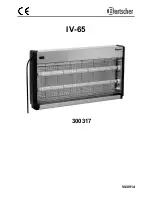
3-22
BOOM AND OUTRIGGER CIRCUIT:
The relief valve pressure setting at the inlet for boom control sections is 3000 PSI (207 bar).
This pressure is required for all but the swing control section. Two work port relief valves are
installed in the swing section. These relief valves are set at 1500 PSI (103 bar).
The relief pressure at the inlet end of the valve can be adjusted with a wrench and an Allen
head wrench. Loosen the nut and adjust the pressure using an Allen head wrench. One turn
will change the pressure by approximately 1300 PSI (90 bar). Turning clockwise will increase
pressure. Turning counter-clockwise will decrease pressure. When done adjusting, lock in place
with nut.
While the pressure gauge is attached, the swing function may be checked by capping the two
work ports of the swing section and actuating the swing control lever in each direction. If those
pressures are improper, the work port relief valve can be adjusted with a wrench, or an Allen
head wrench. Loosen the nut and adjust the pressure, using the Allen head wrench. One turn
will change the pressure by approximately 1325 PSI (91 bar). Turning clockwise will increase
pressure. Turning counter-clockwise will decrease pressure. When done adjusting, lock in place
with nut.
NOTE:
All relief valves are pre-set by the factory and covered with a tamper-evident cap.
BOOM LIFT CYLINDER HOLDING VALVES:
A holding valve is mounted to the base of each boom lift cylinder barrel. These valves are de-
signed to hold the boom in position should loss of power or pressure line failure occur.
To check the boom lift cylinder holding valve, set the outriggers, place the boom in the horizon-
tal position over the front of the crane and raise rated load about 6 inches (15 cm) above the
ground using the boom lift cylinder (not the hoist). The best load for this test is the rated load at
the 20-foot (6 m) load radius with outriggers extended, and the boom over the front. Turn the
engine OFF and move the BOOM lever to the LOWER position. If the boom moves down, a
holding valve may be malfunctioning, or a boom lift cylinder may have leakage past the piston
seal.
W A R N I N G
Before working on the holding valves or plumbing to the boom lift cylinders, always re-
lieve trapped pressure by lowering the boom fully, turning off the engine, and cycling the
BOOM lever.
Summary of Contents for IC-280-A
Page 6: ...1 2 IC 280 A DIMENSIONS...
Page 7: ...1 3 IC 280 A TURNING DIMENSIONS...
Page 16: ......
Page 30: ...2 14...
Page 42: ......
Page 51: ...3 9 IC 280 A LUBRICATION CHART...
Page 58: ...3 16 HYDRAULIC SCHEMATIC...
Page 67: ...3 25 BOOM CHAIN ADJUSTMENT...
Page 72: ......
Page 73: ......
Page 74: ......
Page 75: ......












































